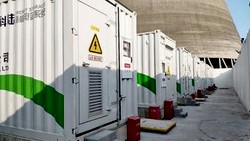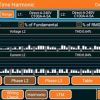When measuring electrical parameters like active power (P), reactive power (Q) and apparent power (VA), there are two primary calculation methods used – the vectorial and arithmetic approaches.
The traditional vectorial method treats the three-phase system as a whole. It adds up the active power from each phase and reactive power from each phase. Then, by applying trigonometry and using the fact that reactive power forms a 90° angle to active power, the hypotenuse of this right-angled triangle gives the total apparent power.
This was commonly used in early electromechanical meters, which lacked the processing power for per-phase calculations. However, it is less accurate than the arithmetic method as it ignores phase imbalances.
Modern electronic meters equipped with microprocessors can calculate parameters on a per-phase basis instead. The arithmetic method finds the VA for each individual phase by using the pythagorean theorem: VA = √(P2 + Q2). These per-phase VA values are then summed to give the total.
CLOU meters employ the arithmetic calculation method due to its heightened accuracy. Some models also allow switching to the vectorial mode for backward compatibility.
The arithmetic method has now become the industry standard due to its precise treatment of three-phase loads. However, the vectorial approach remains useful for validation and educational purposes.
Thank you for reading.
Which method does your utility predominantly use in metering and why? I'd be interested to hear your experiences in the comments below.
Editor's note: This article was originally published in July 2019 and has been updated for comprehensiveness.





All comments are moderated before being published. Inappropriate or off-topic comments may not be approved.